Japanese Artworks: Handscroll, Japanese Picture Frames, Partitioning Screens, and Folding Screens
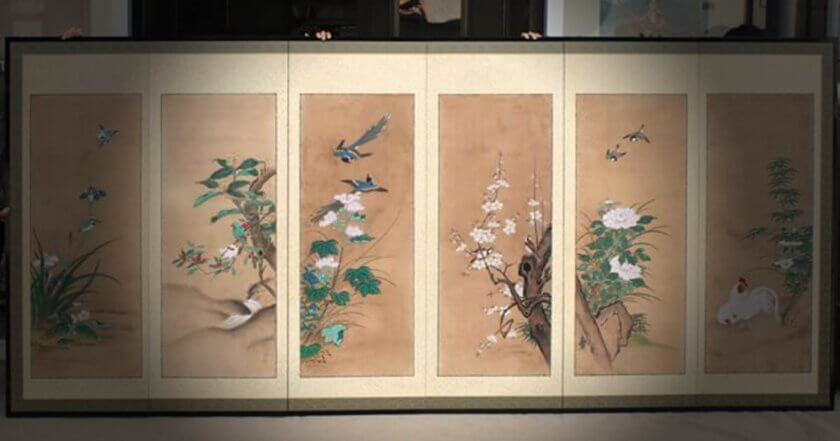
Japanese Artworks: Handscroll, Japanese Picture Frames, Partitioning Screens, and Folding Screens
Aside from kakejiku hanging scrolls, we deal in a variety of Japanese artworks.
We attend to the production and repair work of artworks, such as handscroll, Japanese picture frames, partitioning screens, and folding screens, too.
In this page, we would like to introduce and explain each of these artworks.
Contents
Handscroll, “Makimono”
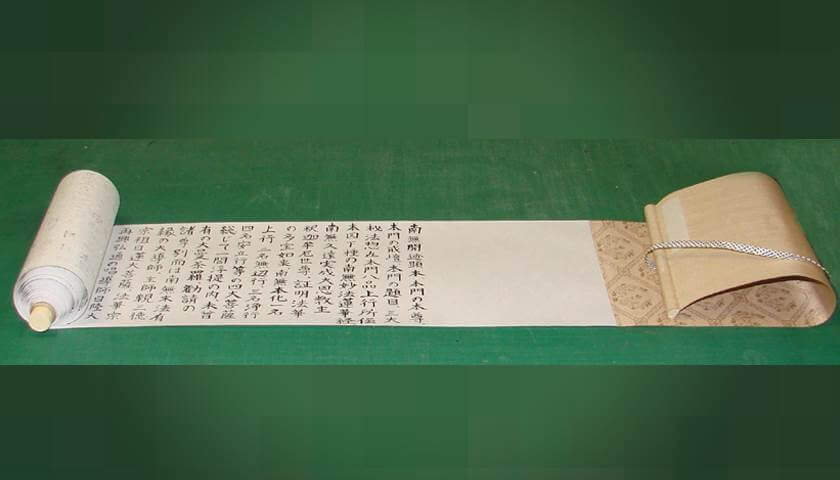
Handscroll, “Makimono”
A handscroll looks very similar to a hanging scroll. While we display a hanging scroll by vertically hanging it, we spread a handscroll horizontally. We roll up the part we saw and spread the next part.
From our perspective, a hanging scroll is an ornamental artwork and a handscroll is a reading material. (Well, a picture scroll is, of course, an ornamental artwork)
Many years ago, there were no book-like reading materials, so Japanese people used these scrolls to appreciate and read stories. Since handscrolls were used for such purposes, in many cases, the works take up larger space than those on hanging scrolls.
In the longest ones, their contents reach a length of some dozens of meters.
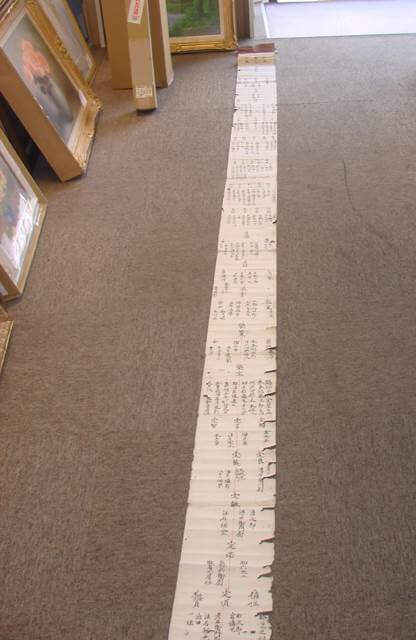
Long handscroll
In most cases, the work is not drawn on a single long sheet of washi Japanese paper, but rather several sheets of washi are glued together to form a long piece.
Normally, when making a handscroll, the work is drawn separately on each sheet of washi and handed to a scroll mounter like us in pieces, who then glued them together into a single sheet.
Recently, thanks to the popularity of some Japanese animes such as Naruto and of Ninja, more and more people outside Japan have come to know the existence of handscrolls.

Ninja
If we associate handscrolls with Ninjas, we may end up thinking about some secret techniques and secret teachings. However, in the old days, travel diaries, stories, and many other things were made into scrolls.
The picture below is a part of Chōjū Jinbutsu Giga (caricatures of frolicking birds, animals, and humans) which is said to be the Japanese oldest manga.
We also attend to the production and repair work of these handscrolls.
Japanese Picture Frames, “Wagaku”
In Japan, for centuries, framed works of calligraphy and paintings have been displayed mainly in areas called “Ranma” located in Japanese-style rooms.
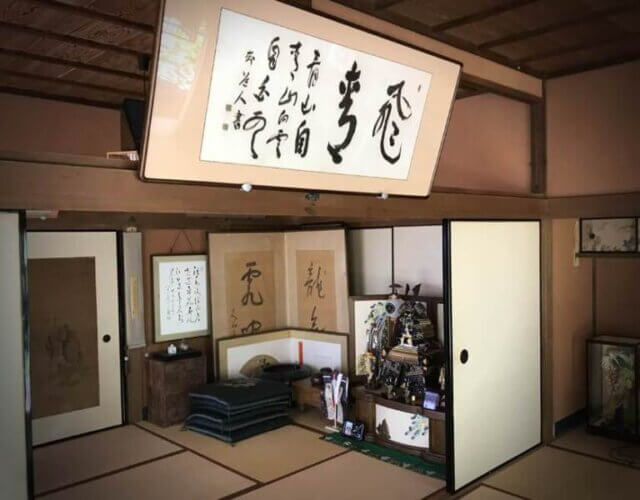
Japanese Picture Frames, “Wagaku”
Nowadays, more and more houses in Japan are westernized, and more people decorate their living rooms with western-style framed works. But there was a time when this type of frame was mainly displayed in Ranma of Japanese-style rooms.
These frames that fit in with the decor of a Japanese-style room are called Japanese picture frames, “Wagaku”, and the Wagakus for display in a Ranma are called “Ranma-gaku”.
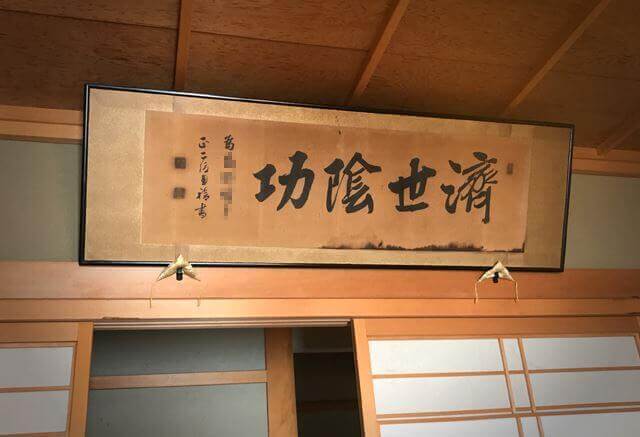
Ranma-gaku
Since the Ranma-gaku is displayed in a Ranma, a peculiar location, it is inevitable that many of the works are longer horizontally than vertically.


Until around the late Shōwa period, most Ranma-gakus did not have any protective material such as glass on the surface, leaving the work exposed to the outside air. As a result, they were vulnerable to external impacts and easily torn, and easily got stains and dirt under the influence of outside air.
Nowadays, we mainly put artworks in frames with acrylic glass on the surface, which has greatly lessened such concerns.
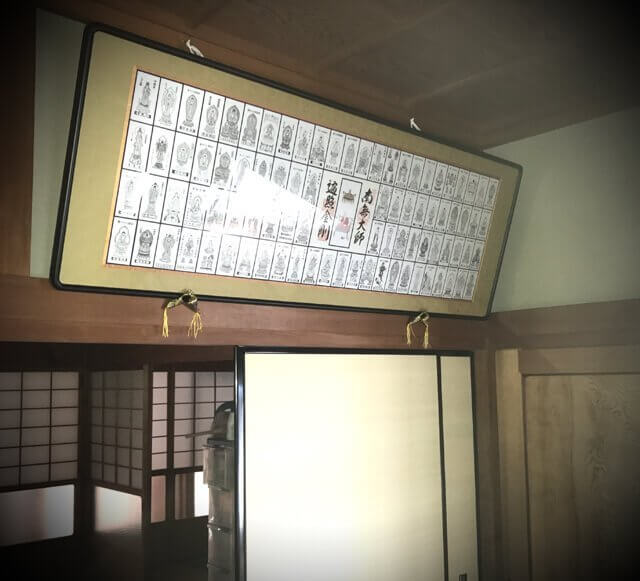
The outer frames of Wagaku come in a variety of colors, thicknesses, and materials, but the majority of them are made of wood.
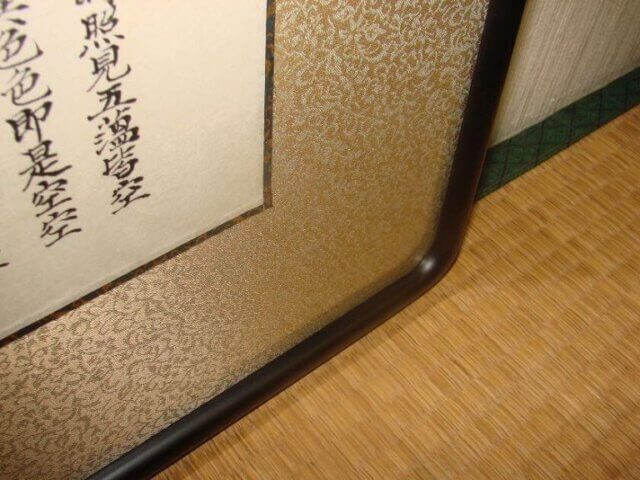
Wooden frame coated with black lacquer
In most cases, the work stuck on washi is directly glued to the frame. Therefore, we will have to remove the work from the frame when we switch the frame to the new one.
This task is highly demanding and it is highly recommendable for those who without sufficient skill and experience not to try this on their own. If your artworks are directly glued to the frame, try not to solve the problem all by yourself and consult some professional framing craftsmen like us.
Also, old frames cannot be reused in most cases.
Some people often mistakenly believe that using an old frame is cheaper than making a new one. However, many frames of old times were not intended for the reuse. You may ask some framing craftsmen to use the old frame again. But it takes far longer than the ordinary cases. To make matters worse, over the years, the wood used for the frame has often been damaged or deteriorated. As a result, you cannot expect your work reframed perfectly.
Using old frames again only costs you more time and money, and all you can expect is a low-grade product. Since it is meaningless, in most cases, we carry out the reframing using a new frame.
We also attend to the framing and repair works of Wagaku Japanese picture frames, including the Ranma Gakus. At the same time, we also offer works of professional painters already framed.
The photo below is of our customer who purchased a framed work of calligraphy written by Mori Seihan, the chief priest of the Kiyomizu-dera Temple in Kyoto.
。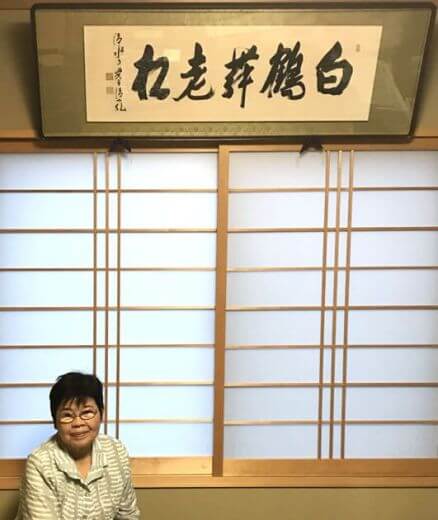
This one below is a repaired work requested by a temple on Awaji-shima Island in Hyōgo Prefecture.
Partitioning Screens, “Tsuitate”

Partitioning Screens, “Tsuitate”
A Tsuitate is a type of partition furniture and has been used in Japanese houses for partition, blindfold, windbreak, and decorative and artistic purposes.
Its feature is a large board inserted into an outer frame, which is mounted on a pedestal to stand upright.
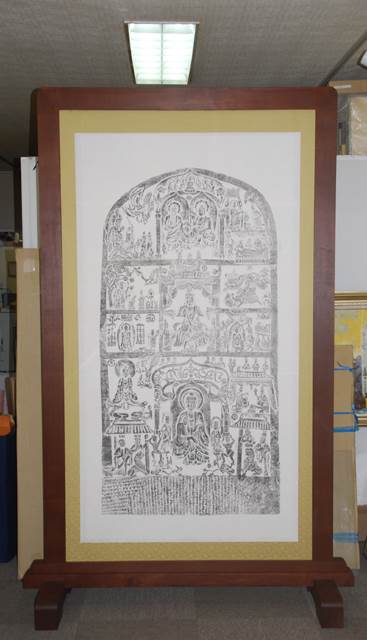
Very long Tsuitate
This Tsuitate has a wide variation, some of which have paintings, calligraphy, or other works attached to the board to be appreciated as artworks.
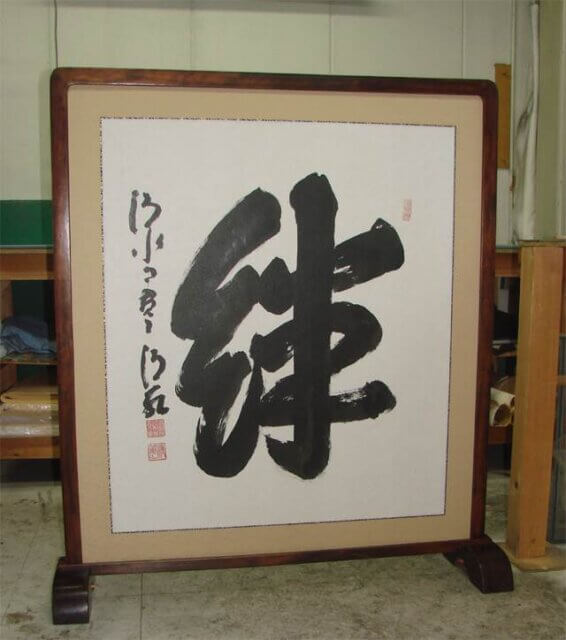
Some have artworks pasted on both sides, while others have one glued only on one side and its backside is simply covered with a plain or simple fabric.
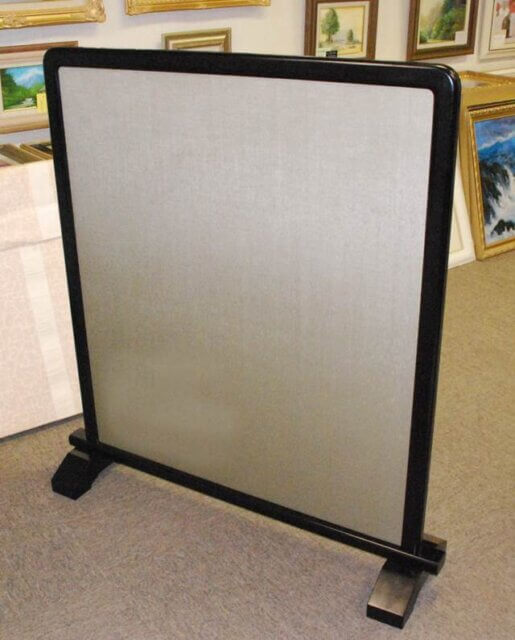
The backside of a Tsuitate Covered with a Plain Fabric
A Tsuitate consists of a board to which an artwork is attached and a pedestal to make the board stand upright, and these two parts can be separated. In order to repair a Tsuitate, first, we remove the board from the frame and pedestal. Then we remove the substrate and artwork from the board. Later, we apply a new substrate to the board, and then we apply the repaired artwork on top of the new substrate.
The board is then set into the original frame and pedestal. This concludes the repair work.
We also attend to the mounting and repair works of Tsuitate partitioning screens. At the same time, we also offer works of professional painters already made into a Tsuitate.
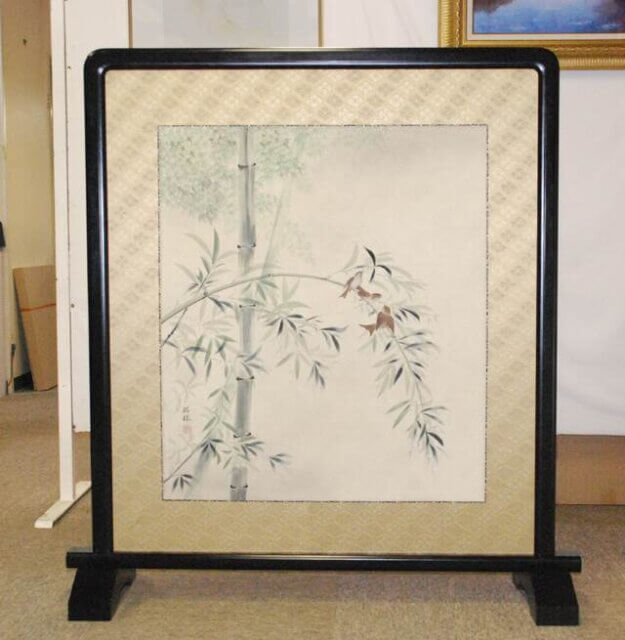
Folding Screens, “Byōbu”
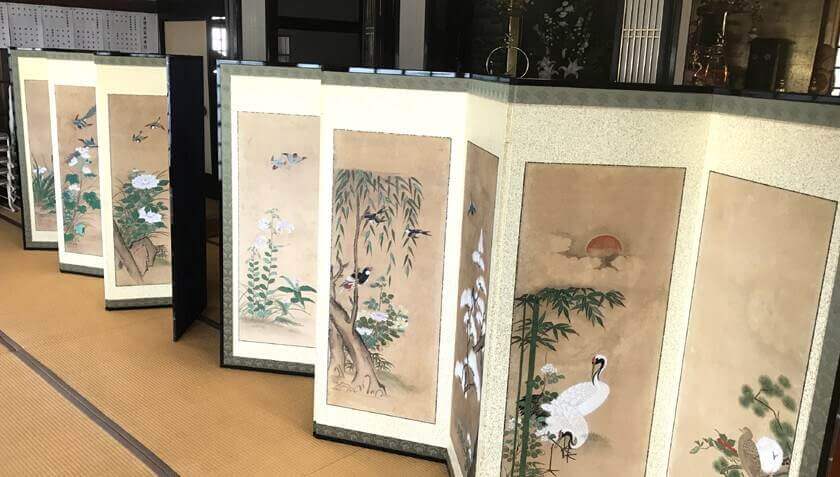
Folding Screens, “Byōbu”
The folding screen, Byōbu, is a type of furniture used to partition and decoration in a room. It is a set of wooden boards that have been reinforced and decorated by pasting paper or fabric on them, and then attached works of calligraphy or paintings on them.
Originally, Byōbus were furnishings used as room dividers, decorations, and windbreaks. And they gradually came to be appreciated as artworks.
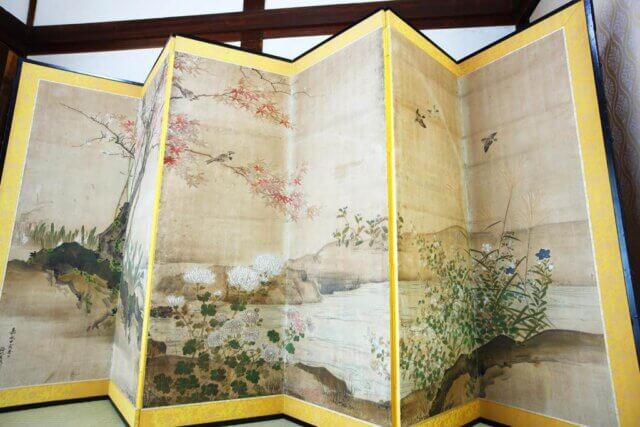
A large Byōbu consists of six boards connected together, and its screen size can be very large. In some cases, works are painted as a set with a pair left and right, in which case the canvas has 12 boards, making it the second-largest canvas among Japanese works of art after wall paintings.

Kakitsubata-zu byōbu (The folding screens of Irises) by Ogata Kōrin
However, the Byōbu can be folded compactly and stored when not in use, and its special structure of the board makes it light and convenient to carry.
Therefore, Byōbu was also used as an exhibition format for many art exhibitions held after the Meiji era. They were also convenient to transport to the venue, which was useful when the venue moves around, as in traveling exhibitions.
For these reasons, a large number of Byōbu works were produced during this period. (Unfortunately, the standard format in most contemporary exhibitions is framed work.)
Besides, from the late Edo period to the Meiji period and afterwards, the influence of Japonism accelerated the demand for Byōbu works in Europe and the United States. So, there are probably a certain number of enthusiasts outside Japan who own Byōbus.

James Tissot, “Young Ladies Looking at Byōbu”
The repairing process of Byōbu is almost the same as that of Wagaku. In most cases, the substrate board will not be reused.
We also attend to the mounting and repair works of Byōbu partitioning screens. At the same time, we also offer works of professional painters already made into a Byōbu.
Summary
How was your impression?
There are, of course, more detailed specifications and differences about Handscroll (“Makimono”), Japanese Picture Frames (“Wagaku”), Partitioning Screens (“Tsuitate”), and Folding Screens (“Byōbu”). But we assume that you were able to get a rough idea of what to expect.
If you are having any problem with your artworks or request for them, here we are to attend to your wishes. Please feel free to contact us.


